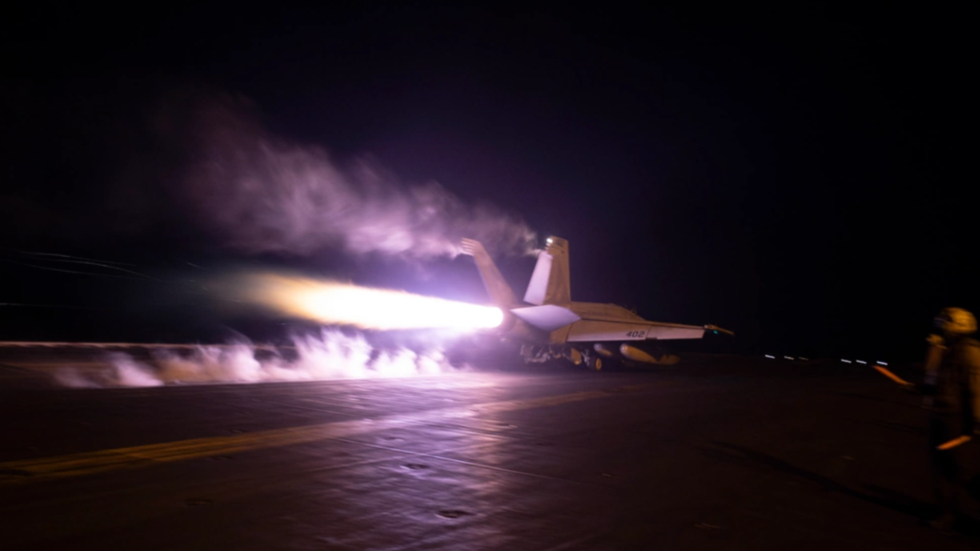The Pentagon has executed a precision airstrike against a purported Iranian-backed Houthi command center located in Sanaa, Yemen, emphasizing its commitment to protect U.S. and coalition personnel as well as international shipping channels. According to U.S. Central Command (CENTCOM), this targeted facility has been identified as a key hub for coordinating Houthi military operations, which have included attacks on U.S. Navy vessels and commercial ships traversing the Southern Red Sea and Gulf of Aden. This action illustrates the ongoing escalation of military activities in the region, particularly in light of recent Houthi missile and drone attacks aimed at Israeli and other international vessels. The airstrike represents a measured response from the U.S. to address the increasingly hostile situation prompted by the Houthi’s assertions of solidarity with Palestine amid the ongoing conflict involving Hamas in Gaza.
In the wake of heightened tensions, the Houthi movement has openly declared its intent to engage in military actions against Israeli interests, claiming to have launched a hypersonic ballistic missile towards Tel Aviv. This missile, however, was intercepted by Israeli defense systems, resulting in no reported casualties. The Houthis’ military activities have expanded beyond immediate regional conflicts, reportedly targeting commercial vessels linked to the U.S. and the U.K., thereby complicating the security dynamics in the maritime routes surrounding Yemen. The U.S. response and military mobilization in the area, especially via naval operations, exemplify the challenges posed by the Houthi initiative against what they view as aggressors to the Palestinian cause.
Last week, U.S. Navy vessels successfully thwarted a Houthi attempt to attack commercial shipping in the Gulf of Aden. On specific dates, two U.S. destroyers actively engaged Houthi unmanned aerial systems and an anti-ship cruise missile, showcasing the readiness of U.S. naval forces to safeguard maritime navigation in high-risk areas. Previous encounters have also included the interception and neutralization of Houthi drones and missiles in strategic locations like the Bab al-Mandab Strait, indicating a sustained U.S. focus on countering potential threats posed by the Houthis to international shipping. The frequency of these engagements highlights the critical nature of U.S. military operations in asserting regional stability amid persistent Houthi aggression.
The U.S. has undertaken operations such as Operation Prosperity Guardian, initiated last year in reaction to the escalating attacks by the Houthis, which emphasizes the coalition’s strategic focus on ensuring the safety of waterways vital for global trade. Recent strategic strikes by U.S. forces have targeted weapons depots and infrastructural capabilities used by the Houthis, further mitigating the operational threat from their camp. On December 15, reports surfaced of U.S. and British aerial strikes aimed at positions in Yemen’s Hodeidah province—an area of critical importance due to its international airport and seaports, though there was little immediate official acknowledgment of these strikes from the U.S. side.
The Houthi forces’ claims of launching sophisticated missile technology, such as hypersonic ballistic weapons, raise concerns about their military capabilities and the broader implications for regional security. As the situation evolves, it is crucial for the U.S. and its allied nations to maintain a robust presence in the region, ensuring the protection of shipping lanes and supporting international law against maritime interference. This military engagement also underlines the significance of collaborative defense measures among the U.S. and its allies to address both the immediate threats posed by the Houthis and the wider geopolitical implications tied to Iran’s influence in the region.
In conclusion, the ongoing military exchanges between U.S. forces and the Houthi movement highlight the deteriorating situation in Yemen and the Gulf region. With the Houthis asserting their military ambitions and solidifying their operational capacities, the U.S. remains poised to counter such threats through precise and calculated military actions. The recent airstrikes and naval engagements reflect a broader strategy to stabilize maritime routes essential for global trade while underscoring the U.S.’s commitment to its allies in the region. The unfolding dynamics suggest that the region will remain a focal point of tension as long as Houthi military capabilities continue to evolve, illustrating the critical need for international cooperation in addressing these security challenges.

